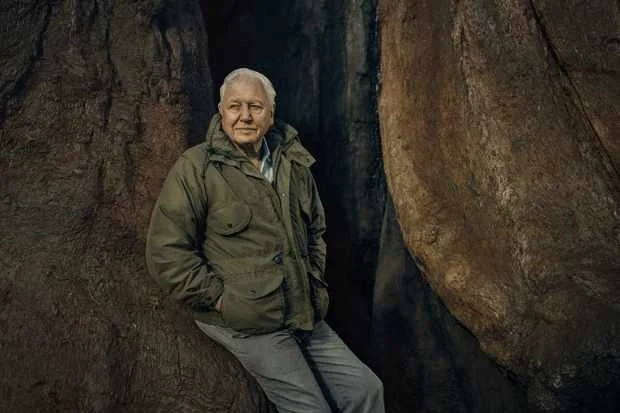New BBC natural history series ‘The Green Planet’ reveals the secret lives of plants in ways we’ve never seen before.
The Green Planet had a simple enough aim, to show viewers the world of plants from the plants’ perspective — a first for the ecosystem of televisionary nature programs. As with so many things on planet Earth that seem simple at first, it proved to be anything but. And yet here it is: an absorbing, life-affirming, five-part docudrama that takes in tropical worlds, desert worlds, water worlds, seasonal worlds and, in the all-summing human worlds, how plants have adapted over time to human habitation. The Green Planet opens our eyes to a side of nature we see every day, and yet rarely think about.
The climate emergency is the hot topic of the moment. Green Planet executive-producer Mike Gunton, a longtime creative associate and producing partner of series-presenter and de facto tour guide David Attenborough, wanted to do more than just view the world of plants through the prism of the world’s accelerating climate crisis, though. The Green Planet is about giving viewers a broader understanding of the role plants play in nature, and how vulnerable they are to intrusion from outside.
Plants, Gunton told writers at a recent conference, are the foundation of life on Earth — and an ally in the campaign against climate change.
“Plants are these extraordinary, unseen, heroic allies for us and they may yet prove to be our salvation,” Gunton said. “But we need to look after them and we need to make sure that we let them do their work for us.”
The reason many of us are blind to plant life, Gunton continued, is because they appear to do nothing. “They just sit around waiting to be trodden on or eaten. If you take this journey through this portal into their world, you suddenly see they live these extraordinary lives, lives not that dissimilar to the lives of animals."
As with Prehistoric Planet before it, The Green Planet relies on recent breakthroughs in camera technology to convey its theme in visual terms that anyone and everyone can understand — everything from specially designed cameras to drones and robotics rigs called Triffids, after the John Wyndham classic about rogue plants taking over the Earth. This technology captures plants in all phases of their life’s curve, in real time and using time-lapse photography. The Green Planet reveals the world of plants as they give birth, grow toward the sky, procreate and then wither and eventually die, all the while attacking and defending themselves from predators. Plant species — and the ecosystems where they’re found — were “cast” based on their unique back stories and their visual impact on the screen.
The Green Planet debuted in the UK earlier this year to widespread acclaim. Gunton admitted one of his more unexpected reactions, and the one he appreciates most, came from the scientists themselves, by affording real-world botanists a glimpse of how the plant world really works, by showing them life as it actually is. While field biologists and botanists might know what a particular plant does, few have actually seen it happen with their own eyes. Until now.
Series producer Rupert Barrington cited a parasitic plant in Chile, for example, called Tristerix aphyllus.
“Their seeds are carried in bird droppings,” Barrington explained. “They attach themselves to the spines of these huge hedgehog cacti. The seeds produce a projectile that shoots out and pulls around the skin of the cactus. It waits until nighttime to open, then it burrows in and lives inside the body of this cactus.
“Scientists knew it did this, but no one had actually seen this living thing actually do this. It's amazing.”
Lofty ambitions aside, at its core The Green Planet had to tell a complex story in simple terms, Gunton noted.
“We did this in two ways. First, we had to find compelling stories, through research. When trying to take an audience into the world of plants — which live in this kind of parallel universe in a different time frame — we had to devote an enormous amount of time thinking of ways we were going to do that technically. We relied on time-lapse photography in many cases — seeing plants in their timeframe. We’ve used time lapse in our BBC Natural History programs over many years, so we had a considerable amount of experience in knowing how to get a look and feel similar to a Planet Earth.
“It meant we had to think of some new technology that would allow us to do that, to immerse the audience in this extraordinary world. We probably devoted a year of scientific research to find the stories, and we spent the same amount of time trying to find and develop these new pieces of tech that would allow the audience to come on this extraordinary journey.
“In the same way we go about choosing stories for Planet Earth, where it’s all about the animals, we looked for stories that the audience could connect with, that are dramatic, that tell us something remarkable about the lives of these living things. We were trying to find stories where there’s an intrinsic drama, and often that means conflict. Conflict in the animal world is paralleled in the plant world. Plants compete with each other for light, for nutrients, for mates, and for sex. We looked for those kinds of stories, stories where the plants themselves were very active. When we put our time-lapse cameras on them and sped up time and entered their world, you start to see this dynamism in action. Rather than just reveal this in a kind of tableau, we wanted the camera to move this world as if we were following animals and looking at their lives through these different perspectives.”
The Green Planet premieres Wednesday, July 6 on PBS at 8E/7C. New episodes air Wednesdays through Aug. 3.






